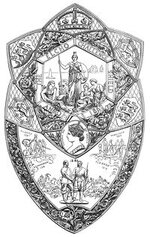Diamond Supporter
Platinum Lifetime
Platinum Supporter
Gold Lifetime
Silver Lifetime
Bronze Lifetime
- Messages
- 24,606
- Reactions
- 66,419
I don't remember anything about anyone drowning in that song (Winchester Cathedral). It's about a guy who laments, "...you're bringing me down..." (not drown) cuz his girl left town and the cathedral bell was not rung to stop her from leaving.
Lyrics to Winchester Cathedral (Frank Sinatra cover version)
The British novelty group The New Vaudeville Band gets the original writing/performing credit.
Lyrics to Winchester Cathedral (Frank Sinatra cover version)
The British novelty group The New Vaudeville Band gets the original writing/performing credit.




















